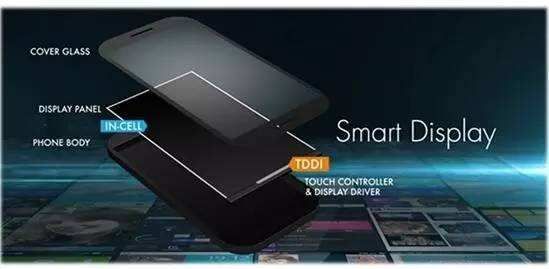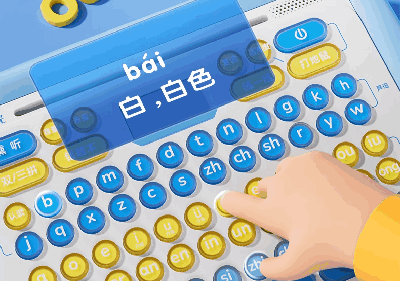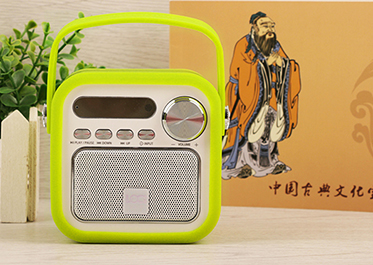TDDI chip war, Chinese manufacturers occupy core technology
TDDI technology is developing very rapidly. It only took four years from the concept in 2014 to the market boom in 2018. Now Synaptics, which was the first to propose a TDDI solution, has also sold its TDDI business to the Chinese company Weir.
TDDI is Touch and Display Driver Integration. The touch and display functions of smartphones are independently controlled by two chips. The biggest feature of TDDI is that the touch chip and display chip are integrated into a single chip.
The TDDI solution can significantly reduce the cost and volume of chip products, and occupy less PCB area for terminals. With the requirements of smart terminals for thin, light and short chips, touch display two-in-one has become a trend and is widely used in the field of LCD screen terminals. As a result, the TDDI market has grown rapidly.
However, TDDI is currently mainly used in LCD screens of smartphones and has very few applications in AMOLED screens. On smartphones, AMOLED panels are gradually replacing LCDs. In the future, if TDDI chips need to ensure market share in the field of smartphones, It is necessary to overcome the technical difficulties in the application on the AMOLED screen. Of course, TDDI chips are also developing in the direction of interactive terminals, such as smart door locks, smart speakers, watches and other devices, and the future market prospects are promising.

The development of TDDI chips
TDDI was first proposed by display touch chip manufacturer Synaptics. Once the solution was proposed, it was recognized by the majority of touch manufacturers and display manufacturers. Synaptics also launched a TDDI mass production solution for mobile phones and tablets in March 2015.
However, although compared with the traditional solution of separating driver IC and touch IC, TDDI has the advantages of lower cost and simplified supply chain because it reduces the number of components and process steps of the traditional plug-in touch solution module, but in reality In the early days of launch, the price of TDDI chips was no lower than when the two chips were separated, and the touch function was not smooth enough, so the market share was low.
As the mainstream market continues to pursue full-screen technology and low cost, issues such as the cost, supported resolution, and touch fluency of TDDI chips have been gradually solved and improved, and shipments have increased year by year. Data shows that global TDDI shipments in 2015 The shipment volume was only 8 million pieces, rising to 50 million pieces in 2016, 414 million pieces in 2018, and 515 million pieces in 2019. Taiwan's major manufacturer Novatek stated not long ago that the TDDI market size will grow to 650 million units in 2020, an annual increase of 18%.
At present, global TDDI players mainly include Novatek, Duntech, Himax, Parade, etc. in Taiwan. South Korea's Samsung, SiliconWorks and other original driver IC manufacturers are also investing in the TDDI market. Mainland China's manufacturers of TDDI chip products are mainly Chiso North , Solomon Technology, but with the completion of the acquisition of Synaptics TDDI (display touch driver integration) business by Weir in April 2020, mainland China has gained a heavyweight TDDI chip manufacturer.
Novatek Technology is a leading driver IC manufacturer in Taiwan. It entered the TDDI market in the second half of 2017. In the fourth quarter of 2017, its shipments reached 10 million units in a single quarter. From the second quarter of 2018, its shipments reached monthly 10 million sets. As TDDI products enter the flagship models of OPPO, Vivo, Xiaomi and other manufacturers, the top five brands in mainland China, and enter Huawei's supply chain, Novatek has gradually occupied a larger TDDI market share.
Himax Optoelectronics announced in April 2016 that its TDDI chips were successfully verified on Chinese smartphone clients and began mass production and shipment. In January 2019, the company announced that its TDDI chips were successfully introduced into South Korea's first-tier smartphone brand manufacturers, automotive displays and other application products. Most of them were shipped to customers in 2019. As a result, Himax Optoelectronics estimated that its 2019 revenue will be as high as The market share increased exponentially compared with the previous year.
With the company's launch of TDDI chips in 2017, Duntai took almost half of the mobile phone orders from mainland China, Japan and South Korea manufacturers in the second half of the year, and gained a larger market share. Hu Zhengda, chairman of Duntai, said at the financial report meeting on November 13, 2019, In addition to existing customers such as Huawei, ZTE, Xiaomi mobile phones and Baidu, LG, Amazon, etc., Facebook's PortalMini has also joined the adoption of Duntai IDC (commonly known as TDDI in the market).
Parade entered the market late. In September 2018, it announced the launch of the TDDI chip TC3315 for smartphones, and worked with panel manufacturer Innolux to create an in-cell solution. According to Parade, the company's products use a 55-nanometer process and consume 29% less power than competing products. Parade acquired the touch division of international semiconductor giant Cypress a few years ago, which made the company even more powerful in touch technology and gave the company the opportunity to successfully enter the TDDI market and seize a place.
In comparison, mainland China's TDDI technology is slightly inferior. Currently, the main products launched are ChipSoft and Solomon Systech. Chitron North is an overall solution provider for display control chips. According to its official website, the company has launched the country's first single-chip solution that integrates touch and display drivers (ITDTM) to fill the gap in domestic product technologies that are provided by major overseas manufacturers. blank. In addition, it is understood that the TDDI chips currently launched by Chitron North only support HD and HD+ resolutions, and there are no products that support FHD and higher resolutions. In addition, it is understood that the TDDI chips currently launched by Chitron North not only support HD and HD+ resolutions, but also products that support FHD and higher resolutions, and some products are mass-produced on OLED screens.
Solomon Systech was established in 1999 by Huada Semiconductor and is a leading semiconductor company. According to news on August 14, 2017, Solomon Systech launched the latest touch display integrated (TDDI) IC-SSD2023U. SSD2023U is a breakthrough product in the industry, supporting Full High Definition+ (FHD+) (1080×2160) in-cell LTPS panel technology, supporting the new market trend: high-resolution smartphones with no borders and 18:9 screen aspect ratio. In addition, Solomon Systech SSD2092TDDI chip has been installed in the HTCU12Life mobile phone.
The future market trend of TDDI chips
TDDI is currently mainly used in LCD screens of smartphones, and only a handful of applications are used in AMOLED screens of smartphones. For example, AUO and Ruiding have jointly used TDDI solutions on AMOLED screens of smartphones, and Samsung Galaxy Note10+ 5G mobile phones have Its SuperAMOLED screen also uses TDDI technology. In addition, industry insiders predict that Apple may test the TDDI solution on new mobile phones with AMOLED displays this year.
Smartphones have high requirements for touch control. In order to avoid the touch layer from interfering with the AMOLED electrodes, the touch layer cannot be integrated into an in-cell design. Some people in the industry have previously mentioned that the main difficulty in implementing TDDI on smartphone AMOLED screens is that because IDC can reuse the Vcom electrode on the LCD, the screen manufacturer does not need to make any modifications to the current production line, making this technology so fast Popularization and mass production. However, the AMOLED panel structure and driving method are completely different from LCD, and the AMOLED driving circuit is more complex, has higher requirements on display charging time, and is more difficult to integrate touch functions.
At present, OLED (divided into active AMOLED and passive PMOLED, and AMOLED is mainly used in display screens) is in a period of rapid growth. Its application market is mainly to replace LCD. The penetration rate of OLED is directly related to its cost, and its cost is directly related to Related to production yield. If the prices of components and materials are reasonable and the production yield exceeds 80%, the cost of OLED will be lower than that of LCD. Once the cost is lower than LCD, OLED will replace LCD on a large scale due to its performance advantages. In 2019, Korean media thelec reported that in the smartphone panel market, OLED panel shipments surpassed LTP LCD for the first time in the third quarter, reaching 144 million pieces.
If OLED gradually replaces LCD, the application of TDDI in smartphone LCD screens will be reduced, and the shipments of TDDI manufacturers will inevitably be affected. The TDDI solution can reduce the number of components, eliminate lamination steps, and increase the output of suppliers, and is relatively Compared with DDI, it can reduce the overall cost of the system, so all TDDI chip manufacturers and major mobile phone brands attach great importance to implementing TDDI on AMOLED.
summary
Although TDDI technology has not been developed for a long time, the market supply pattern is constantly changing. In 2019, the United States imposed a series of sanctions on Huawei. Huawei and other domestic brands became more cautious when choosing American companies. As a result, Synaptics lost the trust of domestic mobile phone manufacturers. Novatek benefited from some of the orders. After Vail acquires Synaptics' TDDI business, mainland China is also expected to re-collaborate with domestic manufacturers to seize TDDI orders from Taiwanese companies such as Novatek and Duntech, and its market share may increase significantly. In addition, after Weir acquires Synaptics' TDDI business, it will become more competitive in overcoming the difficulties of TDDI application in AMOLED screens.
Proposal recommendation
- TOP



